Gunpowder and Cannons at the Castle of Silves? LMAC #29
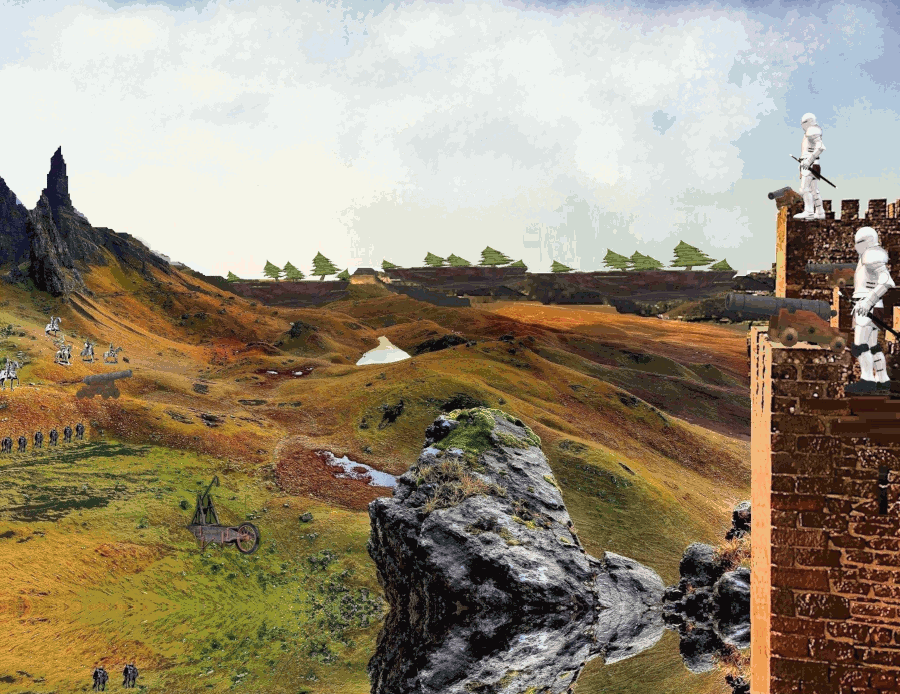
Pity our ancient ancestors, who depended on close, hand-to hand combat in order to kill each other in battle. This primitive state of warfare--where soldiers killed face to face--was never abandoned, but was enhanced with the invention of gunpowder.
Gunpowder enabled the development of weapons that killed from afar. The explosive energy of the powder propelled projectiles against an enemy with deadly impact. While hoist and hurl inventions had served this purpose previously, gunpowder opened new possibilities. Not only could assaulting armies place greater distance between themselves and the target, but eventually greater accuracy in reaching the target would be achieved.
Catapult, One Kind of Trebuchet
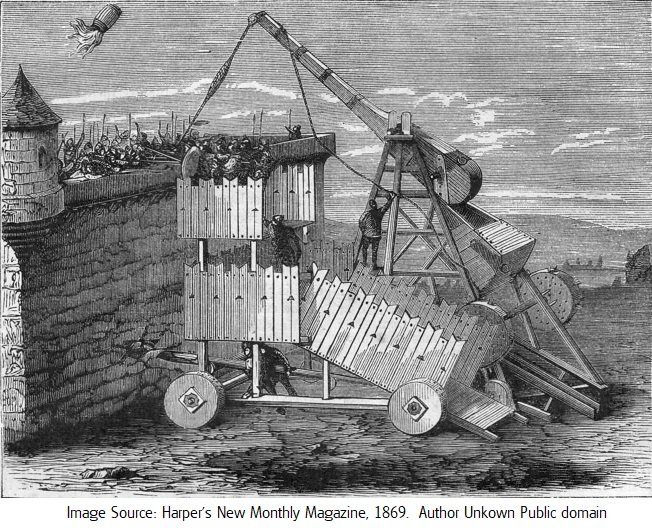
Trebuchets had previously been used to penetrate the defenses of an enemy. In the illustration above, the attacking force is shown hurling fire over the wall of a fortress.
A grim story about trebuchets has endured for centuries. The event was described by fourteenth-century Genoese merchant Gabriele de’ Mussi. De’ Mussi wrote that a plague-infected Mongol army hurled contaminated cadavers over the walls of the besieged city of Caffa. After that, the disease spread through the city.
However, some historians cast doubt on de’ Mussi's account. Most especially they challenge the theory that this incident was the origin of plague in Europe. What is certain, is that plague did come to Caffa, and that it did spread to surrounding regions.
Shaka's Contest
What does all of this have to do with @shaka's Let's Make a Collage Contest? This week @shaka offered a picture of the Castle of Silves, which is located in southern Portugal. Like all castles of the time, the Castle of Silves was a fortress. The castle was conquered, regained, and reconquered several times over a span of centuries. The battles for the castle seem to have ceased in 1242, during the reign of Alfonso III, King of Portugal.
It's not likely cannons were used in the 1242 battle, because several sources place the use of cannons in Europe in the next century.
Alfonso III is said to have restored the castle and its grounds. In the eighteenth century the structure was severely damaged by an earthquake, but since then has been carefully reconstructed in a number of projects.
@Shaka's Picture: The Castle of Silves
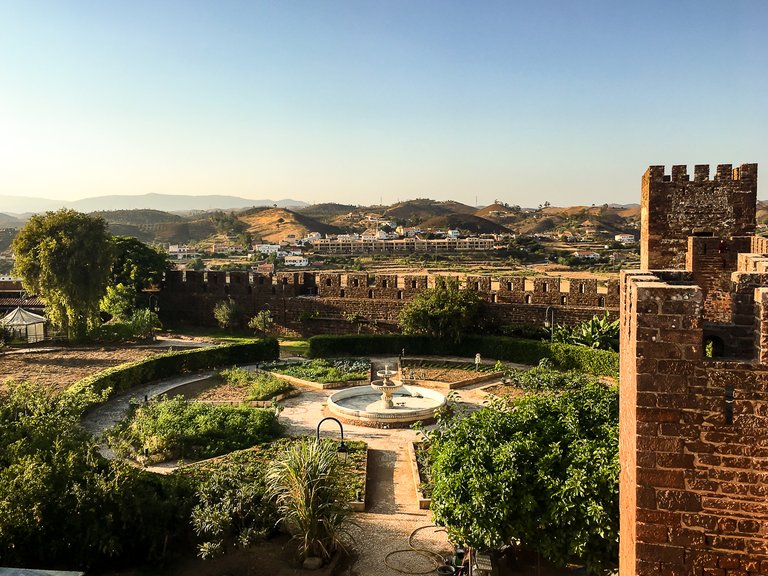
Gunpowder
Although gunpowder changed the character of war, this was not the intention of its inventor. The story of gunpowder's origins offered here (I'm not sure how much is apocryphal) is provided by Live Science.
Potassium nitrate, the basic ingredient of gunpowder, had been used medicinally for centuries. One day, in the ninth century, a Chinese scientist was experimenting with the nitrate and happened to mix it with sulfur and charcoal. The explosion that resulted is said to have burned down the gentleman's house.
Early Cannon, Bronze, Yuan Dynasty, China 1332
Cannonballs were simply heavy metal orbs that were flung against the enemy with force. This solid metal orb was called round shot.
Round Shot Found on Board the 16th Century Carrack Mary Rose
Eventually, round shot evolved to have a more tailored silhouette and was filled with explosive material. Hence, the shell was born. The shell had great accuracy and deadly effect. It exploded on contact.
The Cannon Today
The cannon has been retired, but its offspring, the shell, is very much in use. The shell now carries something called a payload. There are many types of shells, including high explosive, anti-tank (HEAT) shells and armor piercing, capped (APC) shells. War has certainly benefited from science and technology.

I guess I should apologize to my readers for taking them down a path through war implements, but it's hard for me to see a medieval fortified castle without thinking about the reason for those fortifications.
Thank you @shaka for hosting another #letsmakeacollage. This is a great opportunity for Steemians to express themselves creatively and to enjoy the creative efforts of others.
Contest and rules may be found here.

All elements in the collage are in the public domain. These include:
1.Cannons, trees and warriors on the castle walls: Paint3D
2.Trebuchet and cart(foreground, blown up)
Pixabay
3.Landscape Pixabay
4.Knight on horsebackPixabay
5.Knight on horsebackPixabay
6.Knight on horsebackPixabay
7.GIF and effects were created using GIMP
Of course, none of this would have been possible without @shaka's picture.

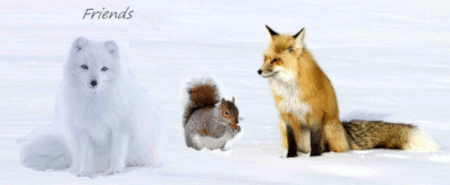
Steem on!

Some Sources Used in Writing this Blog
The Mughal Empire at War: Babur, Akbar and the Indian Military Revolution
http://jarodsforge.blogspot.com/2008/08/whats-difference-between-catapult-and.html
https://wwwnc.cdc.gov/eid/article/8/9/01-0536_article
http://www.montana.edu/historybug/yersiniaessays/broughton.html
https://www.castles.nl/silves-castle
https://biography.yourdictionary.com/alfonso-iii
Medieval Iberia: An Encyclopedia
https://www.revolvy.com/page/Castle-of-Silves?cr=1
https://www.livescience.com/7476-gunpowder-changed-world.html
http://www.thepirateking.com/historical/cannon_projectiles.htm
https://www.britannica.com/topic/Mary-Rose-English-warship
https://www.marinersmuseum.org/blogs/civilwar/?p=2248
http://www.navweaps.com/Weapons/Gun_Data_p2.php
https://panzerworld.com/anti-tank-ammunition#high-explosive-anti-tank
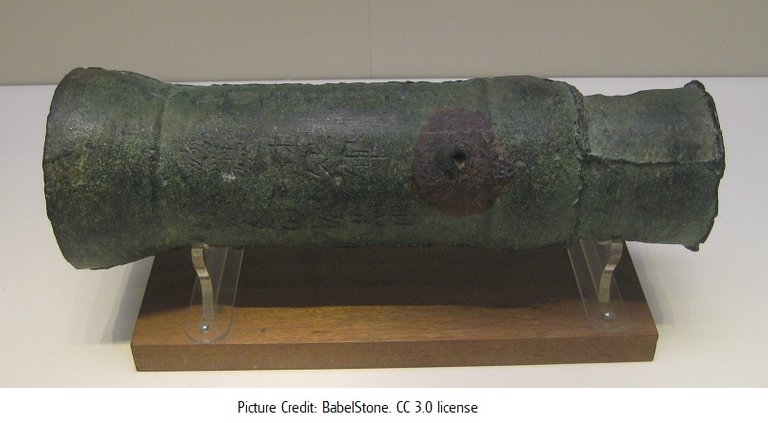
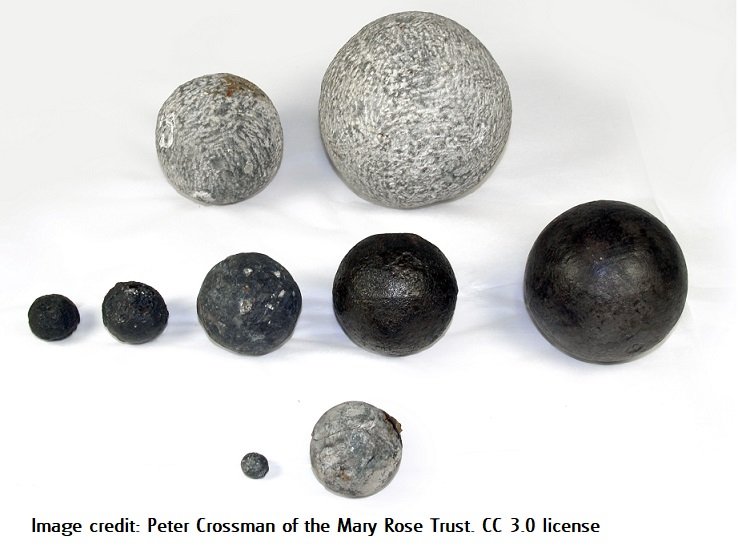
Very cool collage with a lot of action going on ... and the history part is very interesting ... great combination
Thank you so much! Coming from you, that means a lot :)
Thank you for your interesting view on castles - i have never thought about war when i look at a castle... i like ruins for learning about the life in former times. So, thank you for giving me the whole picture ;-)
Dear Kadna,
So nice to see you here. Yes, it is hard for me to see castles without feeling their history. My undergraduate training was in history, so that is always part of my world view. I have the same sense when I look at grand estates in England. I think of the colonial exploits that paid for those homes, of how the riches were accrued.
I very much enjoyed your painting on YouTube. My son bought me paints and easel last Christmas, but I only made one picture because I can't paint. But now, I am inspired by you. Such free expression. I'll have to pull out those paints :))
Affection and hugs,
AG
Most of the people say that. That's because of school (in Germany). Joy and creativity during the process is no goal ;-) just the result and that has to plese the teacher. I Helped people to go back to their childish joy without thinking of right or wrong. It was a pleasure for me to see them wakeing up! Try it - it is so worthy !!!! I am glad if i inspire you :-) Hugs, Kadna
My dear Kadna, I will do now what would seem embarrassing, except you give me courage. My one painting, in honor of you, posted right here. I think you can see the restraint, the reluctance to let go. All lines. Tight (as tight as my unsteady hands can make it). Nothing like your wonderful, free-flowing art, reflecting joy and freedom.
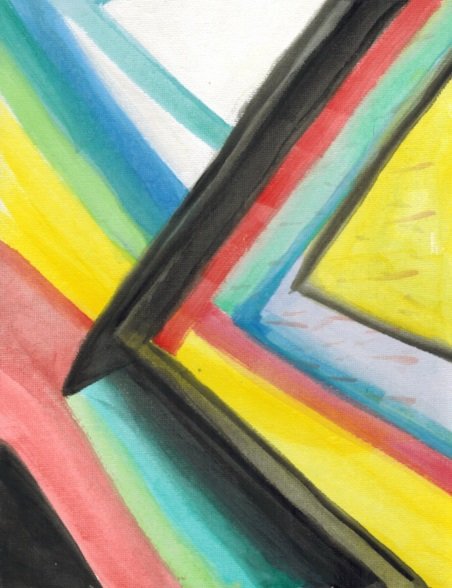
But we all begin someplace:)
Thank you for the invitation to create and be free. If not now, when?
With affection and optimism,
AG
Wow, thank you so much for your picture. I can imagine, that it is not easy for you! Great! I can see many "points" showing you getting mor free. There is still some place left in white! Very good, no pressure to use every space. The big black line is not ending at the corner - it walks on ;-) and the idea of a picture frame is still there. Inside the "frame" i see somme lively little "line", feeling free to dance a bit, across other line - there is joy and weightlessness (hihi, i hope you understand). The "lines" at the bottom became mor free (more water!) flowing into eachother ... I like the friendly yellow in the midth - that is a nice center for your picture!The colours are interesting - some fit very well, and some made a nice contrast - that is free too!
So, go on! This is a very very good start and - don't think about the result ;-) Just colours and water and your heart... I am so glad and thankful that you have painted and showed it "public". Thank you - thank yourself and your creativity, they can "push" you ;-) A big hug! Kadna
Thank you for that critique! :)
I was in a bit of a mood when I picked up my brush to make this simple piece. I just did what felt good. At the end, my mood was better. The wonder of art.
You are a good friend, and a wonderful coach. Those paints are coming out this weekend.
I hope you are happy, peaceful and well.
Big hugs to you back,
AG
That is the secret! 😉 Thank you for your heart warming words! Kadna
🌟🌞🌟
No, no, do not "apologize to my readers for taking them down a path through war implements, but it's hard for me to see a medieval fortified castle without thinking about the reason for those fortifications." War is so much a part of human history, I can't help but see it everywhere. Not just in castles. Movies, books, art, but to a lesser extent, music - Am I missing something? - Museums are filled with paintings of battlefields and warriors, but overall, music seems less likely to express it. There's the 1812 overture with the cannon balls, and the Star Spangled banner, but in popular music, themes of war seem to take a backseat - unlike in Hollywood, where violence and weaponry seems to dominate the market.
Yes, you can find it everywhere even in partnership ;-) But it is your decision. I decided to look on "the bride side of life". Otherwise i gave my energy to the "bad" things and zhat is not my wish. ;-) So i stopped reading newspapers, watching TV... and inform myself in the internet - always keeping in mind to think positive. ;-) If i an't change the situation, i can change myself/my view... Thak you for your comment - have a PEACE full day! Kadna
Always look on the bright side of life!
I do try to do that. I do.
Yesterday in particular made a greater-than-usual effort, because I had in fact read the newspaper, and it was close-to-home beyond-disturbing stuff. Peace to you too!!!
Very informative! I can see them hurling infected corpses over the walls. Horrifying!
Followed a few of the links you provided too (I do that). This post has a true wealth of information in it! Thanks for doing all the work!
Thank you so much for stopping by and for that nice comment. War--not one of my favorite subjects, but when I see a fortification I can imagine the battles that took place around the walls. Too much reading history, perhaps :))
I always read links, also. How else do we learn?
Have a wonderful day, @owasco
Ditto that!
What a tremendous amount of information and research, well organized, and rivetingly written.
(I know. Syntax. Rivetingly?)
thank you for this!
Thank you. At first, I thought this blog fell flat. But I see such clever people stopping by and having a conversation. Nothing flat about that :)
And context?? I'm a rule breaker, especially if we know we're breaking rules. Language evolves because we use it. Creative use of language--go for it!
Nice to see you here, @carolkean.
Your blog, falling flat??? How could you be so mistaken? Ah, Tschaikovsky believed the Nutcracker was his worst work, yet it endures. Mark Twain believed his best work was a Joan of Arc story, which critics have overlooked. We are our own worst judge. Trust your readers who love you and your stories!
I knew I was in for another history lesson but not as far back as 1242. I can't warp my head around that. Another thing I can't wrap my head around was the hurling of contaminated cadavers. Biological warfare had an early beginning. The explosives in the collage caught my attention and had me studying it for a long time. I always wish that castles could talk so I could hear their stories so thank you for giving this one a voice. Well done as always AG! : )
hahaha biological warfare is not a new thing at all.
Just goes to show you how much I do not know. Thank goodness for Stemians like this one. It is a great place to learn. : )
nono you misunderstand! I think your statement about throwing cadavers over a castle's walls being biological warfare is brilliant!
OH! OK!!! Thanks and I am glad to know that I gave you a smile. You gave me one too @owasco! LOL!
My dear @whatisnew,
So nice to see you here, and with such a gracious comment. Yeah, that business about contaminated cadavers...pretty creepy, isn't it?
Thank you for studying my collage. Every time I make one of these I learn something new about technique. So I don't see shortcomings as failures, but as lessons. So much going on...perhaps too much to be aesthetically pleasing, but it does tell a story :)
You know I love your blogs. My camera battery is charged. Next step...figure out how to use the thing :) @kadna inspires me to paint. You inspire me to to take pictures. Isn't this platform wonderful, if you know who to "talk" to.
Hugs and affection,
AG
Hi AG! I spent so much time studying your collage because I loved it. And I have never seen any shortcomings in your collages but I do understand what you are saying. In life, I always learn from my mistakes.
HaHa! The camera battery is charged is a great first step. LOL! Figuring out how to use it is even better! HAHAHAHA! I can't stop laughing! LOL!
Yes, this platform is the best and so are you!!! Many HUGS to you, my friend. : )
Hello my dear friend <3
What a wonderfully concise, informative post. I enjoyed reading every little bit of info you shared with us here, as well as your perception of castles which very much coincides with mine.
I was vaguely familiar with the knowledge that gunpowder wasn't initially created for what it turned out to be used :) Also, the introduction of your post reminded me of Jared Diamond's words from his book The rise and fall of the third chimp (p.201):
I have a huge fascination for medieval castles & churches. It is a good thing to live in Portugal when that is your thing! Last summer we went to visit a little place called Óbidos, and just like you said, while wandering inside its walls I couldn't help but think of battles, fear and the kind of human conflict that took place back in the day.
Source
Ps: Also impressive is the São Jorge castle in Lisbon, but then again there are lots similar to these dotting the country :D
All right! This is all for the moment.
With infinite love,
From cold Portugal :)
These replies are as impressive as the original post - and informative - how did I miss another Jared Diamond book? What a great quote on our unique ability to kill many from a distance.
I need to keep up better with creators like you, @agmoore, @abigail-dantes, @whatisnew, and (new to me) @kadna. I tend to limit myself to whoever shows up in #freewrite and #dailypetphotography. Hence, I see @owasco more often than your names, but even then, I am not keeping up and reading enough. So much great content! And the comment are so rewarding too!
Rivetingly put!
Diamond is probably my top favorite biologist. I mostly respect his wide views and constant way of drawing from perspectives that range from anthropological to psychological <3 :)
It's nice seeing you around @carolkean.
Have a great weekend.
And, once again, thank you for your always kind words!
All the best to you :)
I also love Diamond - I only own the Guns-Germs-Steel book.
Need to get caught up!
Thank YOU for the kind words and all best to you too!
Oh yes, by all means, follow @kadna. Inspiring, thought-provoking, and amiable. All my friends on Steemit are nice people :)
I love castles and such but there are very few of those here in the US, so my opportunity to develop that awe has been limited. An American revolution fort or two is as close as we get here, besides mansions which just piss me off or McMansions which horrify me. I experience a reverence for history whenever I am in a canoe on a river or lake and I envision the peoples who lived on this soil at around the same time y'all are imagining the goings on in medieval castles. No gunpowder in those canoes, although they may have known how to make saltpeter from their urine. Thanks for that particular link @agmoore.
I have similar thoughts too, with regard to the native peoples who lived in my country of origin (Brazil), from back in the time when here in Europe they were already building monasteries and castles. I remember this one time, we stayed in a little B&B which was in a 600 year-old building! I remember thinking ... 'wow, my country as it's known today is only about 500 years old!'.
Ah! I did not know you were born in Brazil. How is it you came to Portugal (Portugal?)? Family I'm guessing.
I wonder if I would feel the weight of all that has happened in a building like that. I've never been in one. I'll be sure to stay in those if I ever manage to leave the US.
Not only family, but studies, work, better life style ... I lived in Chile before, and before that I lived in England :)
I recently read somewhere (I have no idea how you guys come up with quotes so easily) that some band of humans somewhere south of Europe had a DNA makeup that made them more war-like, less chimp-like, and that their murderousness spread first to Europe and then to the rest of the world as they murdered, raped and procreated their way into power, spreading that murderous DNA everywhere they went. Contrast this with images of quiet nature loving natives in all other parts of the world, and we can see where it all went wrong. Are we sunk?
Oh! I am interested in looking into this info a little further @owasco. Many, many things came to mind as I read your comment. As far as I understand chimps are incredibly violent and war-oriented. Please see J. Diamond & J. Goodall. Goodall for example, has written many accounts of chimps killing off individuals of their neighboring territory to usurp their land (her work mainly results from studies conducted through naturalistic observations).
Also, based on research I've conducted for my work, I have come across studies that challenges the view "images of quiet nature loving natives in all other parts of the world". There are anthropological studies suggesting that the migration of the ancestors of today's American Indians - 11.000 years ago to what is now 'the Americas' - was followed by the extinction of the big mammals (e.g. mastodonts, tapirs, mammoths) of North and South America within only a few centuries. This is accepted to be a cause-consequence phenomenon by some.
This is a compelling notion which contradicts that which suggests that those big mammals went extinct as a consequence of climate change. Many oppose to it. But, evidence supporting it becomes stronger and stronger over the years as they proceed to scrutinize it (e.g. excavation of Clovis's sites). This is not to say, of course, that native peoples don't have greater respect for nature than white European men. Still, the history of humans is one that is deeply intertwined with the history of destruction, especially the destruction of nature. No matter the their socio-demographic origins.
Are we sunk? No at all, we are, as a race, more peaceful and tolerant towards one another, as hard as that might sound (please, see S. Pinker's The better angels of our nature).
Ok @owasco, see how you get me going?? :D My goodness.
I better stop here.
Much love to you from across the ocean :*
Bye for now!!
Well that was my pleasure!!!
Perhaps I romanticize "native" persons. It's easy to discount nature and become inured to its destruction if you have little experience with it, just as it's easy to dehumanize people of a certain creed or persuasion if you have no contact with them.
I'll try to find the article I referred to.
This is true!! :)
All right it's Friday night!!
Off from social-media until Monday now :*
Dear Abigail,
How happy you make me with your thoughtful and informative response. It is heartening that you picked up on the intention of my first paragraph, and my collage. Neither the collage nor first paragraph reflect a fascination with war, but rather a deep regret that we have become increasingly efficient at killing each other.
I'm not familiar with Diamond, but boy do I love that quote. I will become familiar with his writing in the future.
Your pictures are magnificent. I'm not surprised that castles dot the landscape. When I think of the long history of the Iberian peninsula and the many many battles that have been fought over this and that bit of territory...castles are relics of those battles.
One more thought before I end: look at the dialogue that has ensued between different visitors to this one post. If people think Steemit is purely about financial speculation, I challenge them to look at this conversation. Some of my favorite people have commented here. It doesn't feel virtual. It feels real.
Thank you for the gift of your time, your insight, your wisdom and the role you play in stimulating dialogue.
Love, from very, very chilly New York,
Your friend,
AG
I know @agmoore, isn't fascinating? Steemit is definitely a place where one can meet truly incredible, smart people. Where one can learn and have very engaging conversations. In my experience, those who regard Steemit as a failure (or whatever they say) are those who haven't managed to look beyond the the financial side of the platform <3
Keep yourself warm over there! We trying to do the same here :D
Ps: Last Friday night we locked ourselves out of the house. It was raining, windy and extremely cold! :P But luckily we had the car keys and still managed to catch the locksmith open (a grumpy French man who spoke little Portuguese and virtually no English). It was a night to remember! 😅
Much love to you, as always :*
🍀🌼 🍀😇